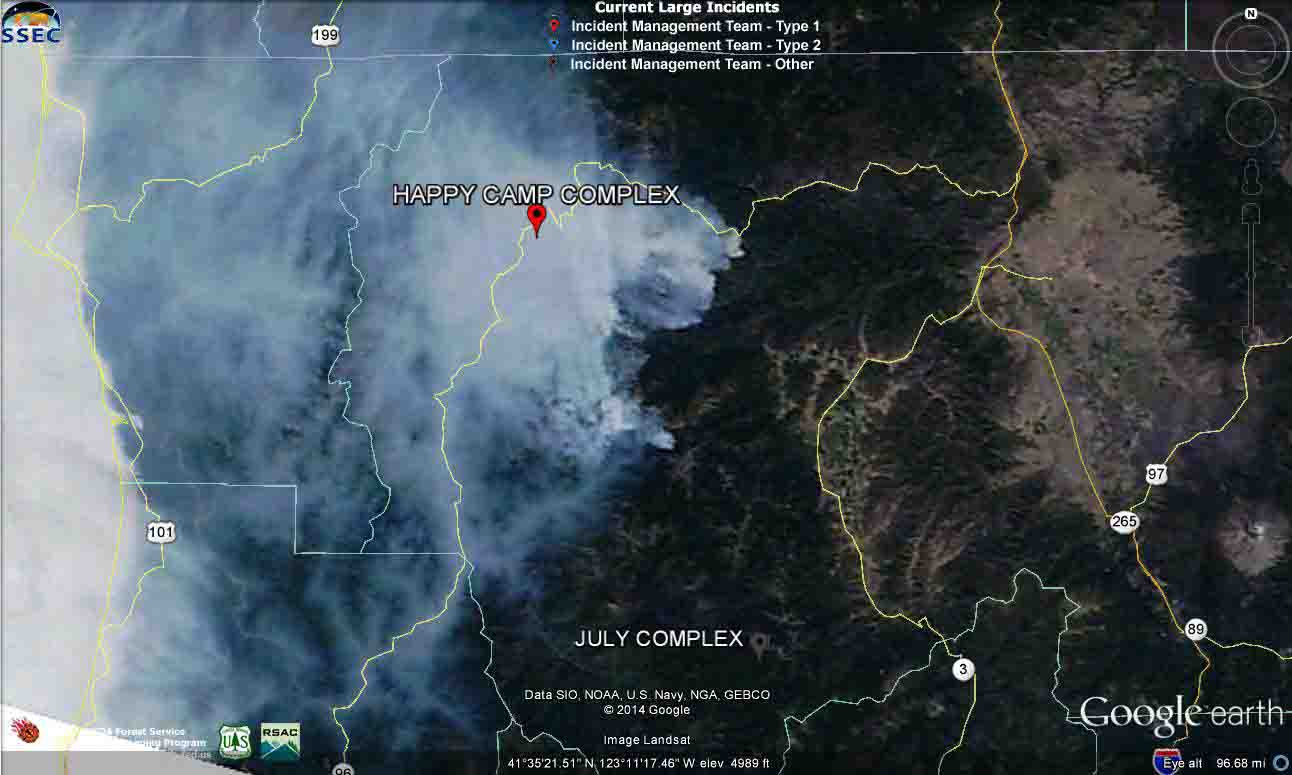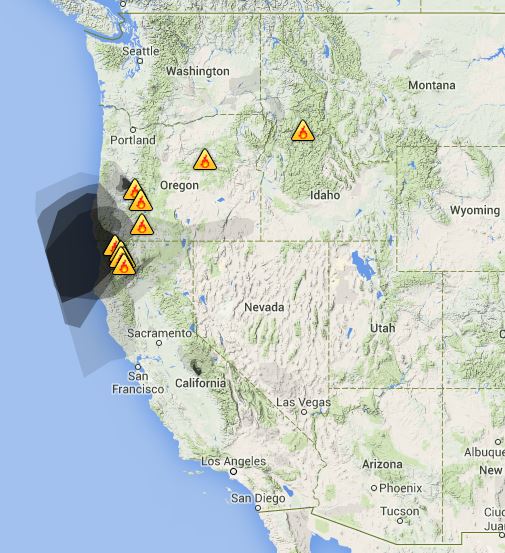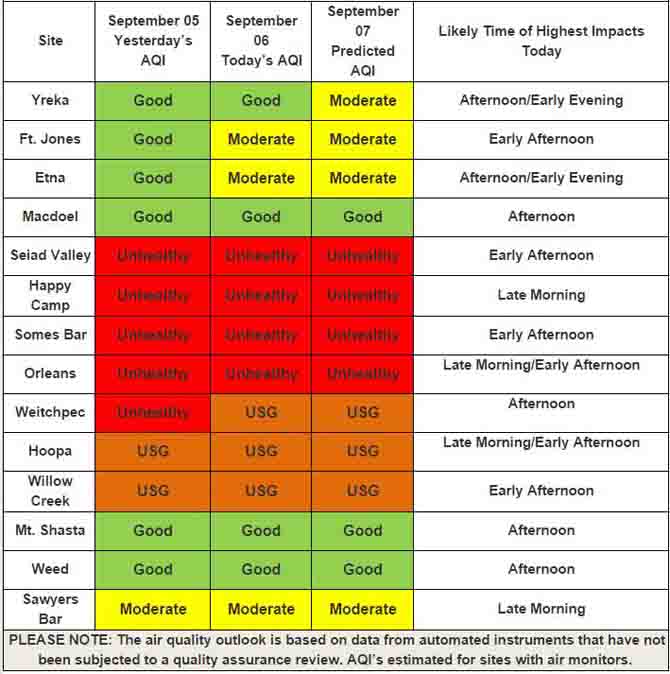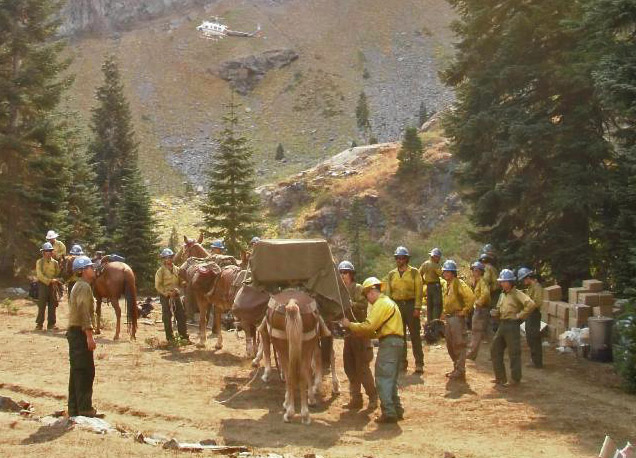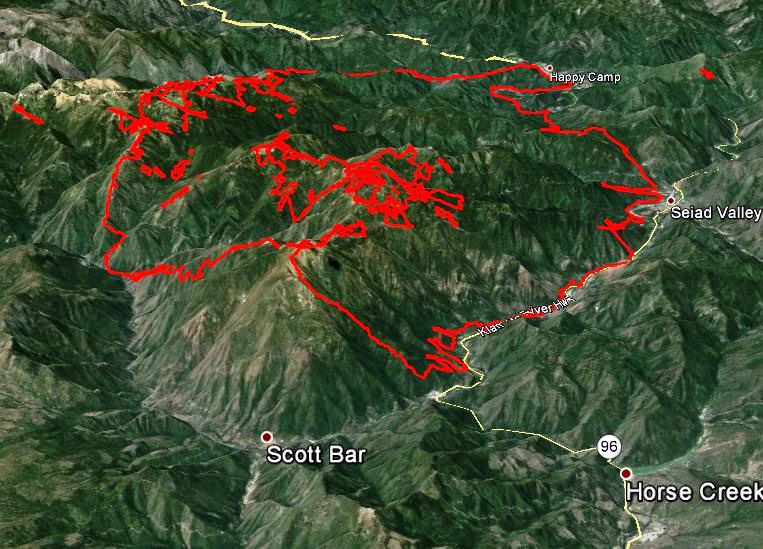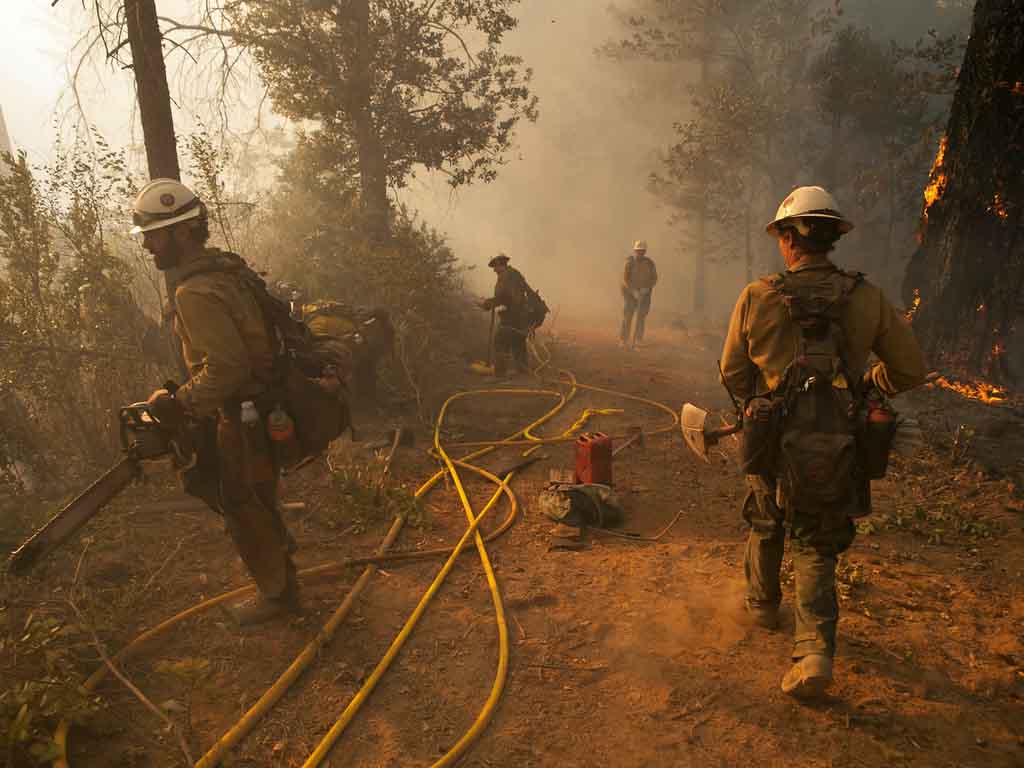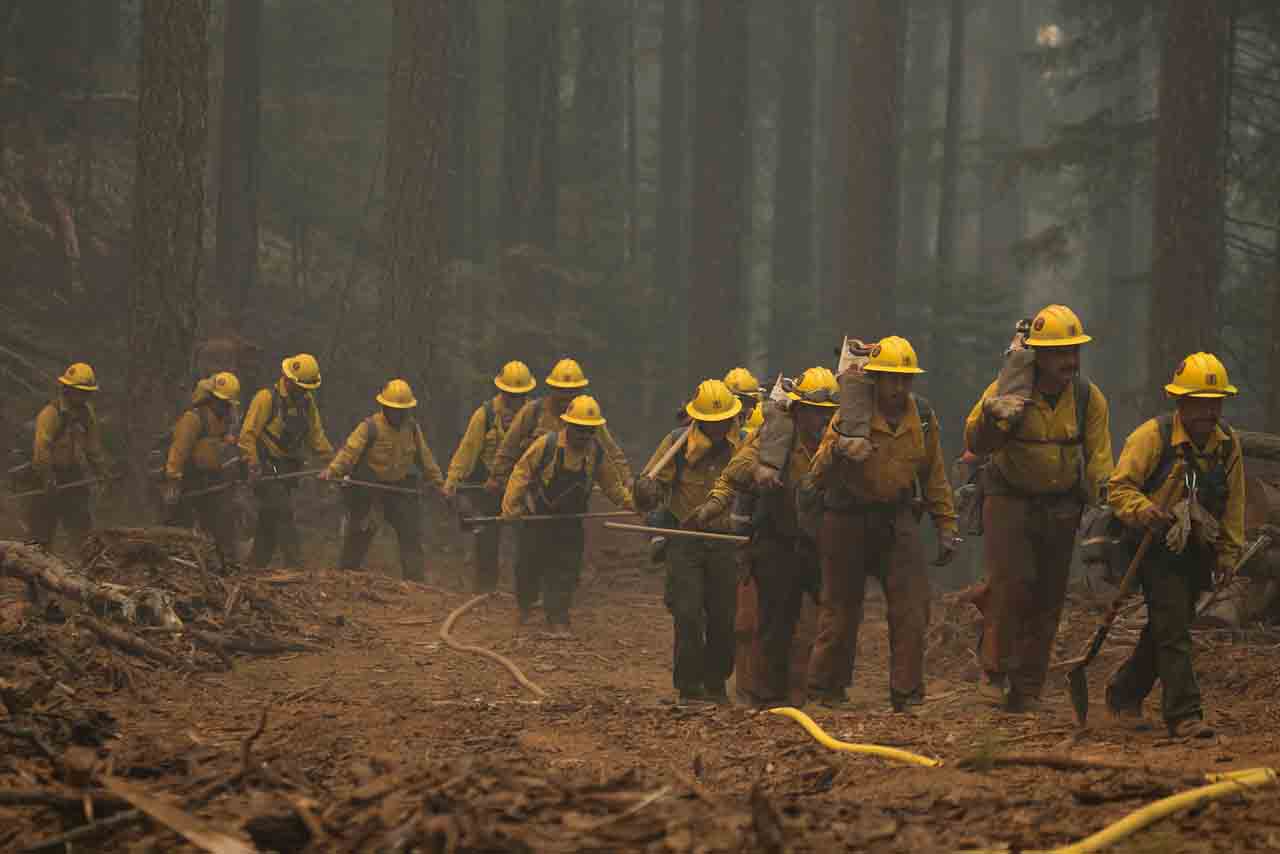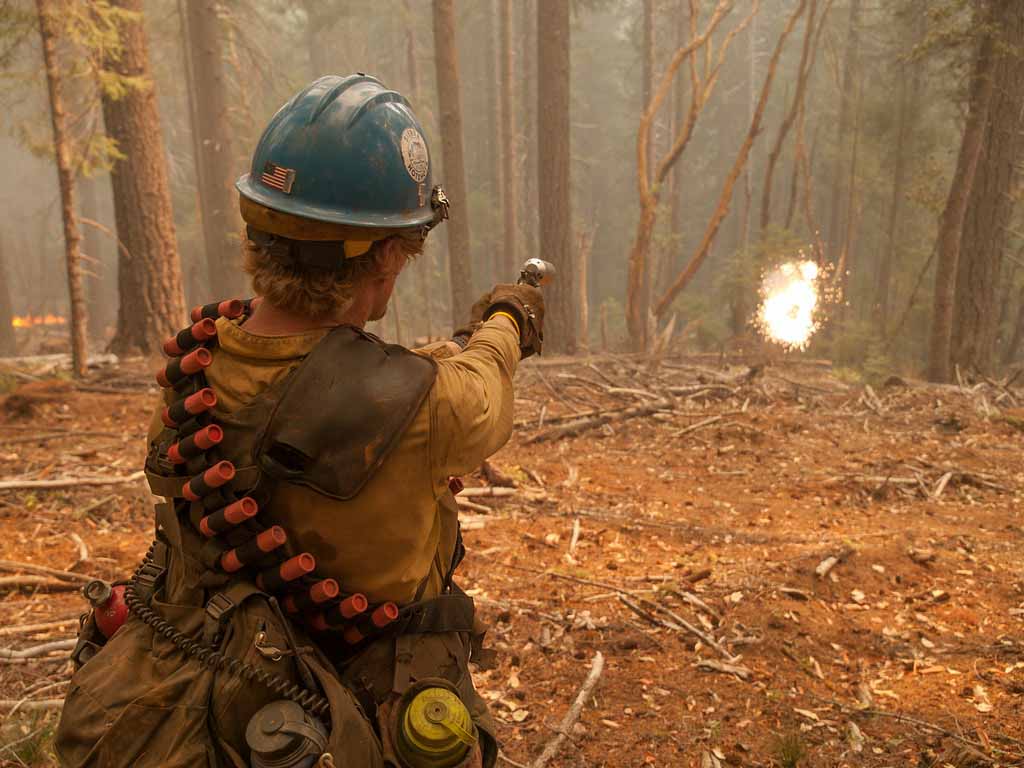(UPDATE at 8:55 a.m. PDT, September 10, 2014)
The spread of the Meadow Fire in Yosemite National Park in California has slowed, but still grew by about 100 acres on Tuesday to a total of 4,500 acres. As predicted, sunny weather and much lower relative humidity enabled some spot fires to become more active. There was also some isolated crowning and torching. On Wednesday the weather will be similar, but with stronger winds gusting up to 15 mph out of the west in the afternoon.
Firefighters are staying overnight in spike camps at several locations to reduce helicopter flights into the wilderness, but helicopters are being used to support crews with water drops. The highest priority is to secure the west flank to allow the trail to Half Dome to open.
The National Park Service has settled the issue of the origin of this fire, writing on InciWeb that it was an expansion of the fire that had been monitored since July 19, exacerbated by a wind event, rather than it being a new fire that started on Sunday.
Professional photographer Michael Frye posted some excellent photos of the fire on his web site.
****
(UPDATE at 8:35 a.m. PDT, September 9, 2014)

The Meadow Fire in Yosemite National Park has grown to about 4,400 acres and was still very active when it was mapped Monday night. Rain showers passed through the area Monday morning but the precipitation may have evaporated before much of it hit the ground, since a weather station in Yosemite Valley did not detect any rain. Another weather station about 12 miles northwest of the fire measured 0.07 inches.
The Meadow Fire was first reported on July 19 but was not suppressed. It had spread to cover 19 acres while it was being monitored, until Sunday, September 7 when it began to grow rapidly pushed by a very strong wind.
On Sunday 85 hikers and climbers were evacuated from the summit of Half Dome by helicopters from the California Highway Patrol, U.S. Forest Service, Sequoia & Kings Canyon National Parks, and CAL FIRE.
High humidities assisted firefighters on Monday, slowing the spread of the fire, but the RH will lower into the 20s on Tuesday and no rain, in fact no clouds, are in the forecast for several days.
Cooper’s Type 2 Incident Management Team assumed command of the fire Monday. No information about the fire has been posted on InciWeb, however we found some updates on Facebook and the park’s website.


****
(UPDATE at 5:11 p.m. PDT September 8, 2014)
The NPS announced Monday morning that the fire in Yosemite has been mapped at 2,582 acres, up from the 700 acres reported late Sunday.
This time-lapse video of the fire is fascinating. It gets better at 0:21 after the camera is moved out of the bottom of the valley.


